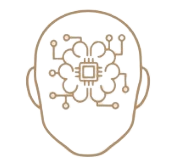



Target Identification: The adventure begins with identifying the villain – the specific pathogen we want to protect against. This involves understanding its biology, how it interacts with the immune system, and its vulnerabilities. Think of it as deciphering the enemy's playbook.
Antigen Selection: Once the enemy is known, the next step is choosing the weapon – the antigen (part of the pathogen) that will trigger the immune response. This could be a whole virus, a specific protein, or even just a piece of genetic material. Imagine selecting the enemy's flag to train our soldiers.
Vaccine Design and Formulation: With the weapon chosen, it's time to craft the shield. Scientists design the vaccine structure, choosing delivery methods (like injections or sprays), adjuvants to boost the immune response, and stabilizing elements for safe storage and transport. Think of building a customized armor for our soldiers.
Preclinical Testing: Before unleashing the vaccine on humans, it undergoes rigorous testing in the lab and on animals. This ensures safety, checks for immune response effectiveness, and identifies potential side effects. Imagine training soldiers in a simulated battlefield before sending them into real combat.
Clinical Trials: Now, the vaccine faces its real-world test. Carefully designed clinical trials involving diverse groups of volunteers assess the vaccine's safety, efficacy, and optimal dosage. Think of this as the final training ground for our soldiers before deployment.
Regulatory Approval: After successful clinical trials, the vaccine navigates the rigorous gauntlet of regulatory agencies like the FDA. They scrutinize data, manufacturing processes, and quality control measures to ensure public safety and effectiveness. Imagine the general inspecting the soldiers' readiness before sending them out to protect the land.
Manufacturing and Distribution: With approval granted, it's time to mass-produce the vaccine and ensure its equitable distribution. This involves scaling up production, maintaining quality control, and establishing efficient delivery networks to reach those who need it most. Imagine setting up a well-coordinated supply chain to equip all the soldiers on the front line.
Surveillance and Monitoring: Even after rollout, the vaccine's journey continues. Scientists and public health officials monitor its safety and effectiveness in real-world settings, tracking potential side effects and adapting to any changes in the pathogen. Imagine ongoing intelligence gathering and training adjustments to keep the soldiers prepared for evolving threats.